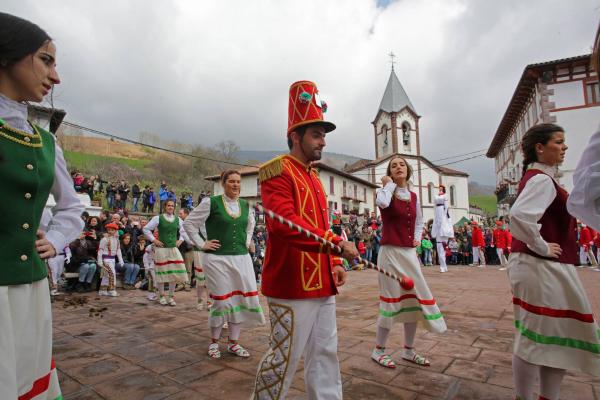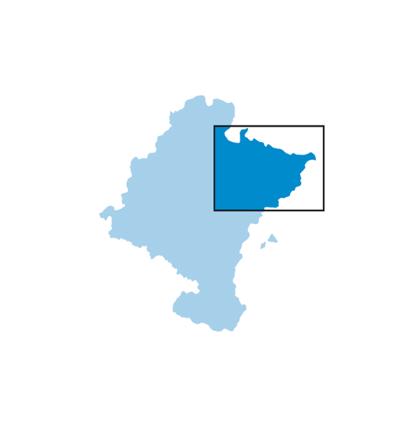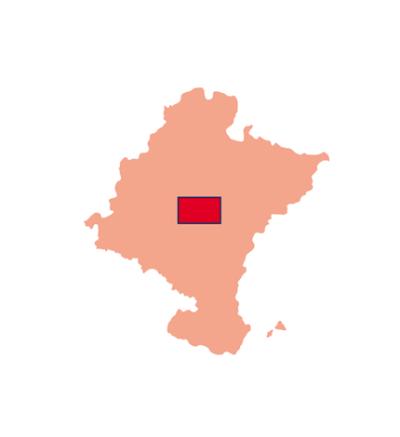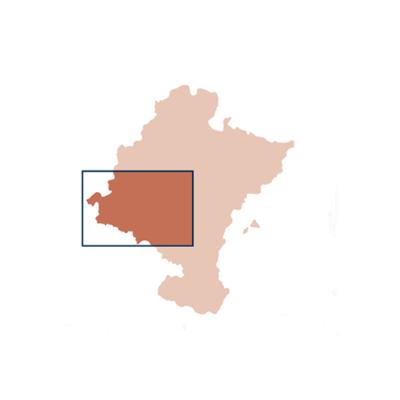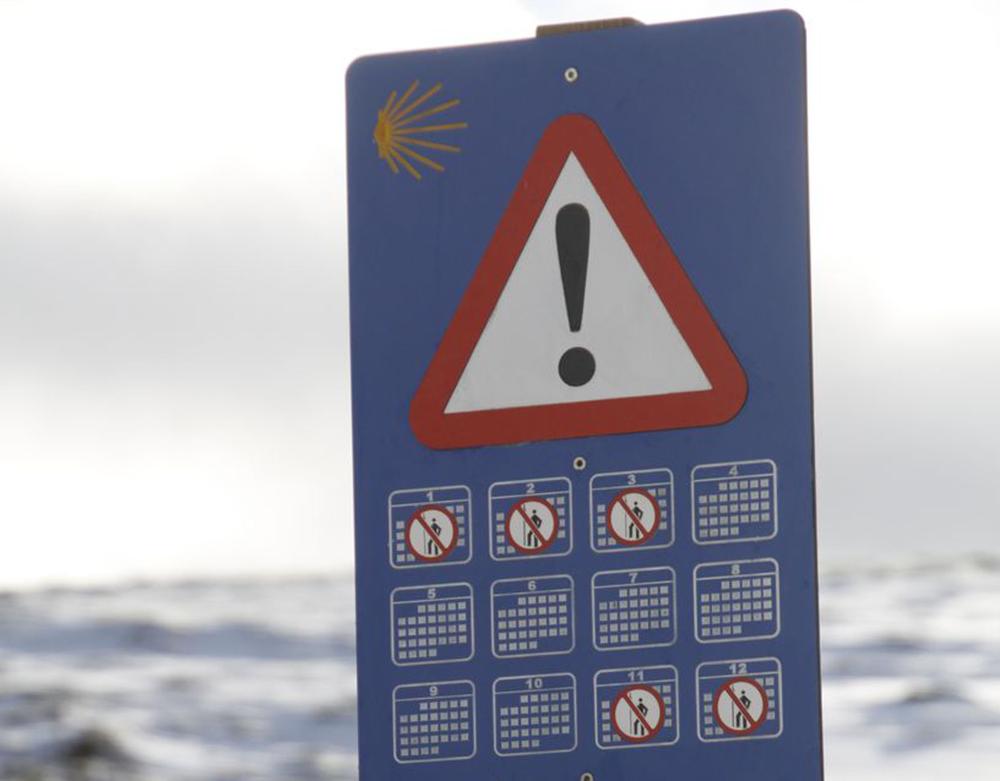
Warning. The passage of pilgrims is prohibited.
From 1 November 2025to 31 March 2026, for reasons of safety, the winter closure resolution comes into effect. This prohibits the passage of pilgims through the Eastern variant of the French Way of St James on the stage between Saint Jean de Pied-de-Port and Orreaga/Roncesvalles over the crest of Lepoeder (known as the "Napoleon Route").
Instead, pilgrims should use the Western route through Luzaide /Valcarlos.
134 kilometres
FRENCH ROUTE From Orreaga/Roncesvalles to Viana
If you want to take the most popular route of them all to discover the Way of St James, then this is the one for you.
Bear in mind that if you depart from Saint-Jean-Pied-de-Port (France), you can reach Orreaga/Roncesvalles via Luzaide/Valcarlos or taking the Napoleon route. The latter is much harder and is closed from 1 November to 31 March. But both take you through some beautiful landscapes with breath-taking panoramic views.
As you leave the north and its beech forests behind you, you go down to the capital of Navarre, Pamplona, and cross the Central Zone, through fields of golden grain and vineyards which change with the season.
Check out the tracks on Wikiloc:
WARNING: extreme caution is recommended on the section into Zubiri due to the poor condition of the ground
- From Zubiri to Pamplona
- From Pamplona to Puente la ReinaFrom Puente la Reina to Estella-Lizarra
- From Estella-Lizarra to Viana
The stops on this route include:
-
Luzaide/Valcarlos
Your first stop is a small village where the influence of the Way of St James lives alongside an epic past, for it was on the surrounding slopes that Charlemagne's troops were defeated by the Vascones in 778. Don’t miss the exhibition centre, where they explain everything about one of the important battles of the Middle Ages.
More information about the exhibition centre
The landscape is lush and rugged, and if you are passing through on certain dates, Easter Sunday for instance, you can watch the dances of the Bolantes, one of the village’s best-known hallmarks. -
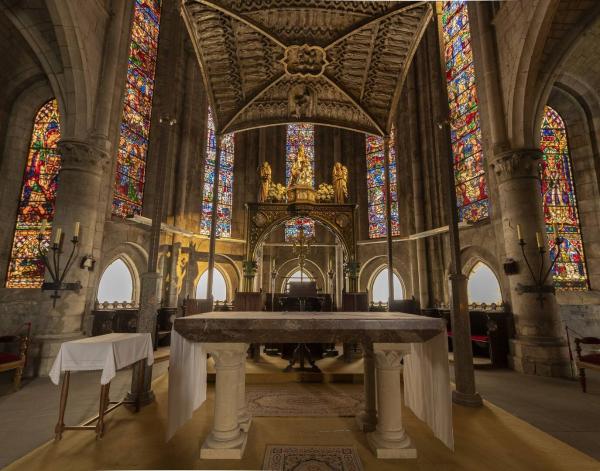
Collegiate Church of Orreaga/Roncesvalles
A well-preserved example of French Gothic architecture at a privileged spot in the Navarrese Pyrenees. Walking around the beautiful cloister, admiring the colourful stained-glass windows in the apse and visiting the tomb of Sancho the Strong are all musts on the French route.
And the pilgrims’ mass, the blessing at the end of which is given in as many languages as there are visitors from different countries present, is often packed.
You’re going to fall in love with this historical site, the place where Charlemagne suffered his greatest defeat at the hands of the Vascones.
Discover all the magic of the place here -
.jpg)
Auritz/Burguete and Aurizberri/Espinal
Two linear villages with Pyrenean houses to die for. Ernest Hemingway described this as the wildest damn country in the Spanish Pyrenees. And it wasn’t easy to make an impression on Hemingway!
The cemeteries in both villages are curious. The symbolism of their layouts, the funeral steles they contain and the peace they transmit make them well worth a visit.
-
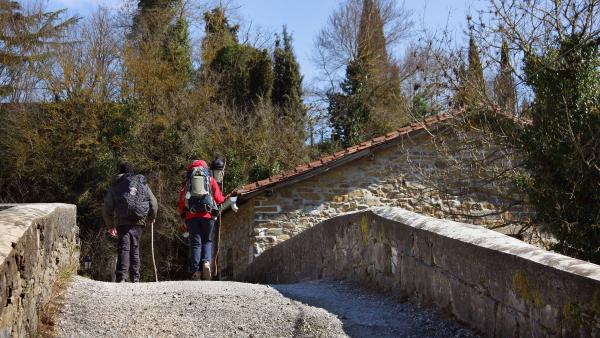
Zubiri
The administrative centre of the Esteribar Valley is known for its famous mediaeval bridge. Legend has it that animals that walk around its central pier are protected from rabies. That’s why it’s popularly known as the Rabies bridge.
Discover Esteribar valley -
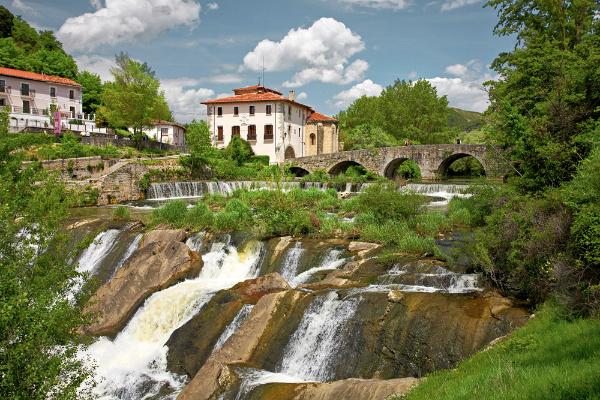
Arre
Just before reaching Pamplona, on the banks of the Ultzama river, is a place that often goes unnoticed but which contains centuries of history, faith and mystery: La Trinidad in Arre. This basilica, of Romanesque origin, is not only part of our historical heritage; it’s a place of spiritual energy. A place where time seems to come to a standstill. It is now a pilgrims' hostel.
Nearby is the Villava fulling mill, which houses an exhibition explaining the history of the building and the riverside park.
When you pass through here, take a break! Don't see it as just another stop on the Way.
-
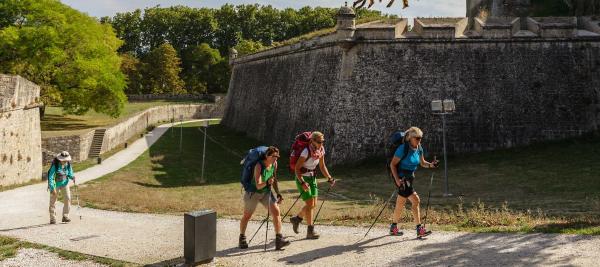
Pamplona
Ahh, the capital.
But in case you haven’t, here’s the ABC of Pamplona
Elegant, walled and very green, Pamplona is well worth stopping off to see. History, art, good food and hospitality all await you here any time of the year.
You probably already know about its biggest attractions — the Cathedral, Plaza del Castillo, the Taconera park, Calle Estafeta, the Citadel — and have heard about its engaging historical quarter, tasty pintxos and wealth of cultural life. -
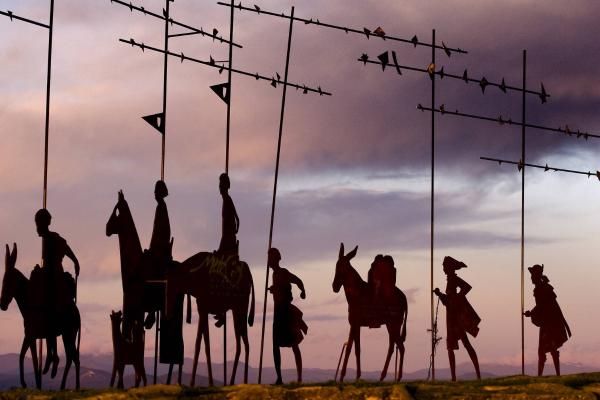
Alto del Perdón
An overlook, 770 metres above sea level, with outstanding views of Pamplona and the Pyrenees to the north, and cornfields and medieval villages to the south.
The view comes with an interpretation panel explaining the history of the site and the Monument to the Way of St James, a life-size sculpture bearing the words: Where the way of the wind meets the way of the stars. Pretty, isn’t it?
-
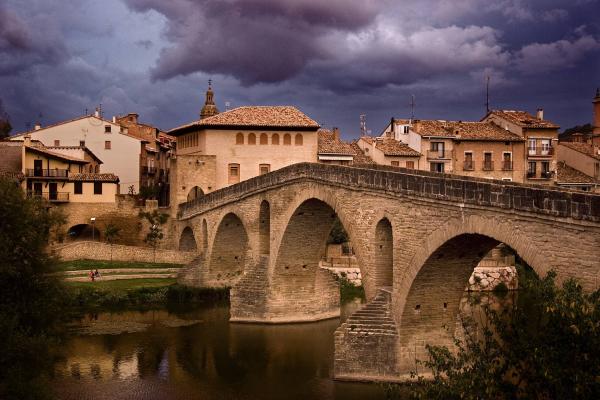
Romanesque bridge, Puente la Reina
A majestic bridge that instantly transports you to the Middle Ages. One of the most graceful bridges on the Way of St James. This is where the two branches of the French Way meet before following the same route to Santiago.
And you also have the chance to see the layout of a typical linear town and enjoy the lively atmosphere there, with all the hustle and bustle of so many pilgrims.
More information about Puente la Reina -
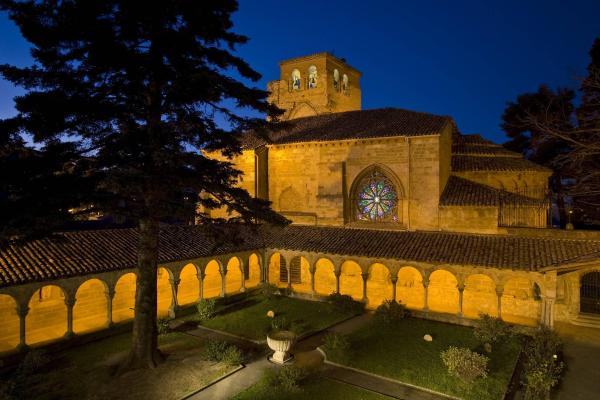
Estella-Lizarra
The Romanesque and ‘Way of St James’ city par excellence, with architectural gems around every corner. Here you will find palaces, like the Palace of the Monarchs of Navarre, noblemen's houses, mediaeval churches — like San Pedro de la Rúa, with its enigmatic Solomonic column in the cloister —, convents, bridges and beautiful squares.
Our recommendation: take your time to enjoy the place; it’s one of the most charming towns in Navarre.
I want to discover Estella-Lizarra -
.jpg)
Monastery of Iratxe, Ayegui
Imagine a drinking fountain that spouts both water and wine. Strange, right? Well, you’ll find one here: the famous double-spouted fountain next to the Irache winery.
The monastery is a set of buildings from different eras — medieval, Baroque, Renaissance — surrounded by vineyards that you just have to see.
-
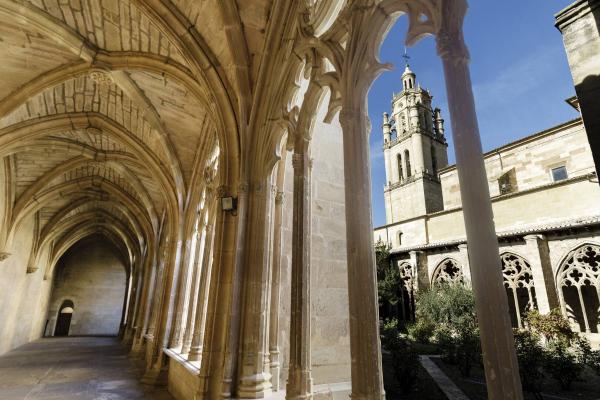
Church of Santa María, Los Arcos
A stunning building in a mixture of styles — late Romanesque, early Gothic, Renaissance and Baroque —, all fruit of the changes in tendencies over the time it took to build and renovate the church between the 12th and 18th centuries.
Don't miss the organ, with its painted wooden pipes: a true visual delight in one of the most beautiful churches in Navarre.
-
.jpg)
Church of El Santo Sepulcro, Torres del Río
A small church with a barrel-vaulted roof that’s sure to surprise you. The octagonal ribbed dome is the church’s most beautiful and original feature, bar, perhaps, its 13th-century figure of Christ.
Enjoy its verticality and harmony, and feel peace invade your spirit.
-
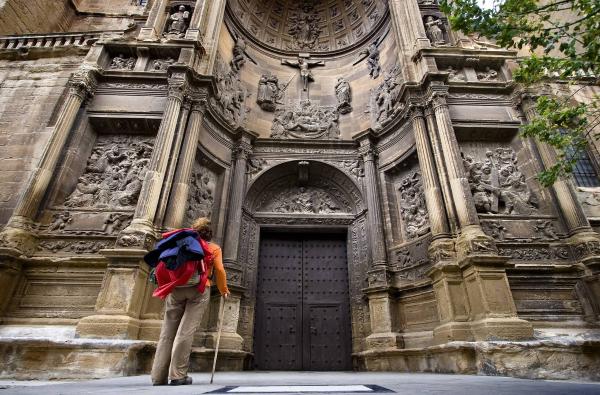
Church of Santa María, Viana
The last stop on this branch of the Way of St James and the resting place of César Borgia.
Don’t miss the church’s magnificently carved door, a fine example of the splendour of the Spanish Renaissance, to bring the route to a close.
More information about Viana


